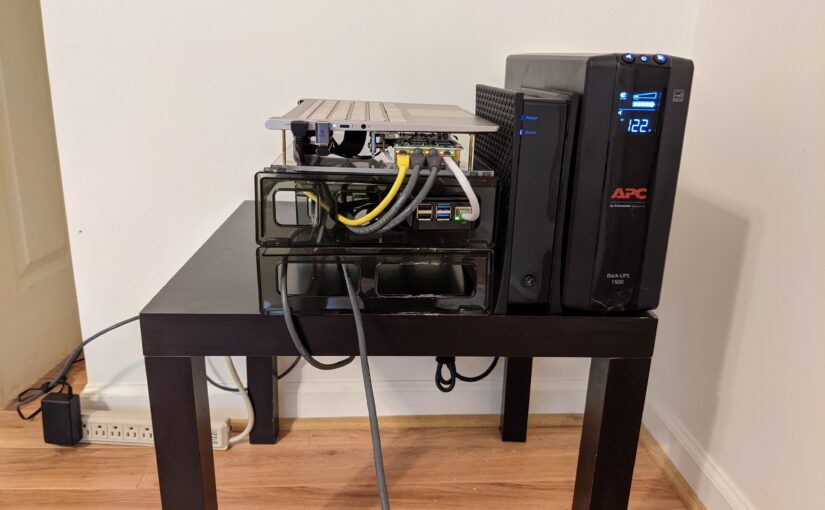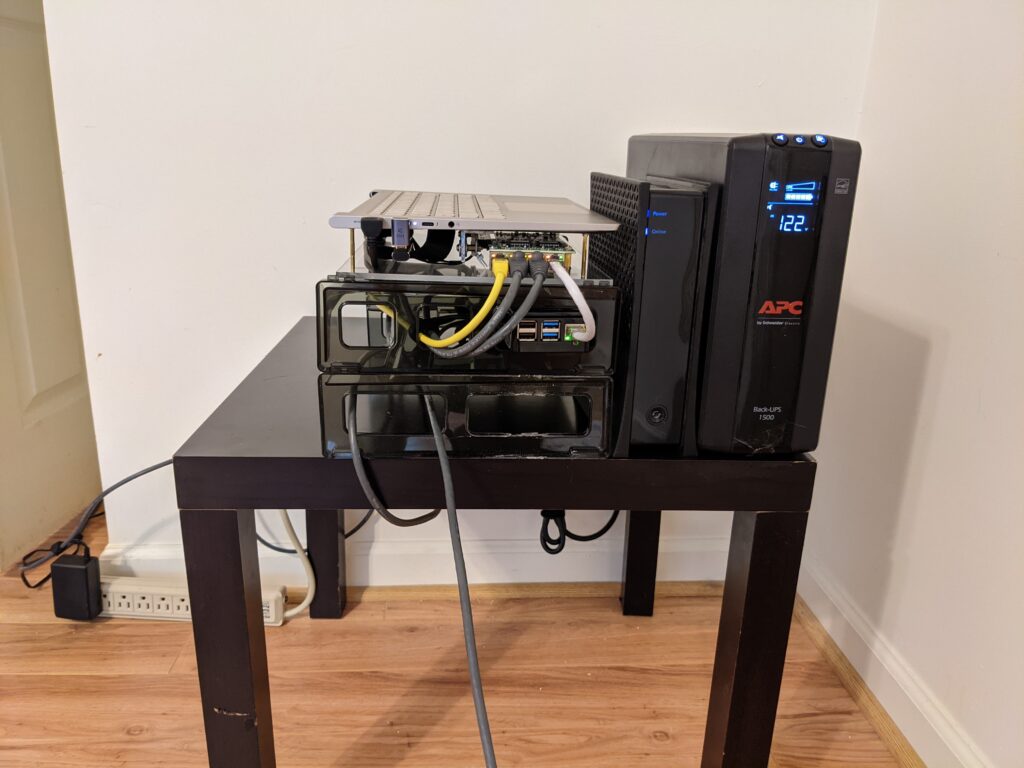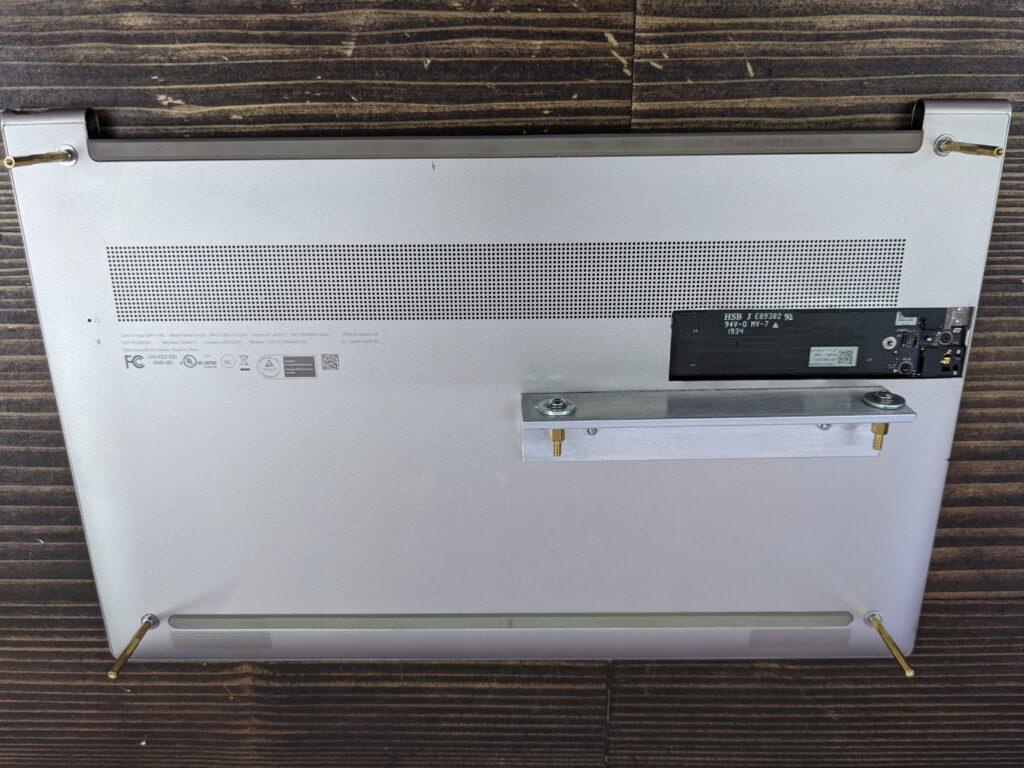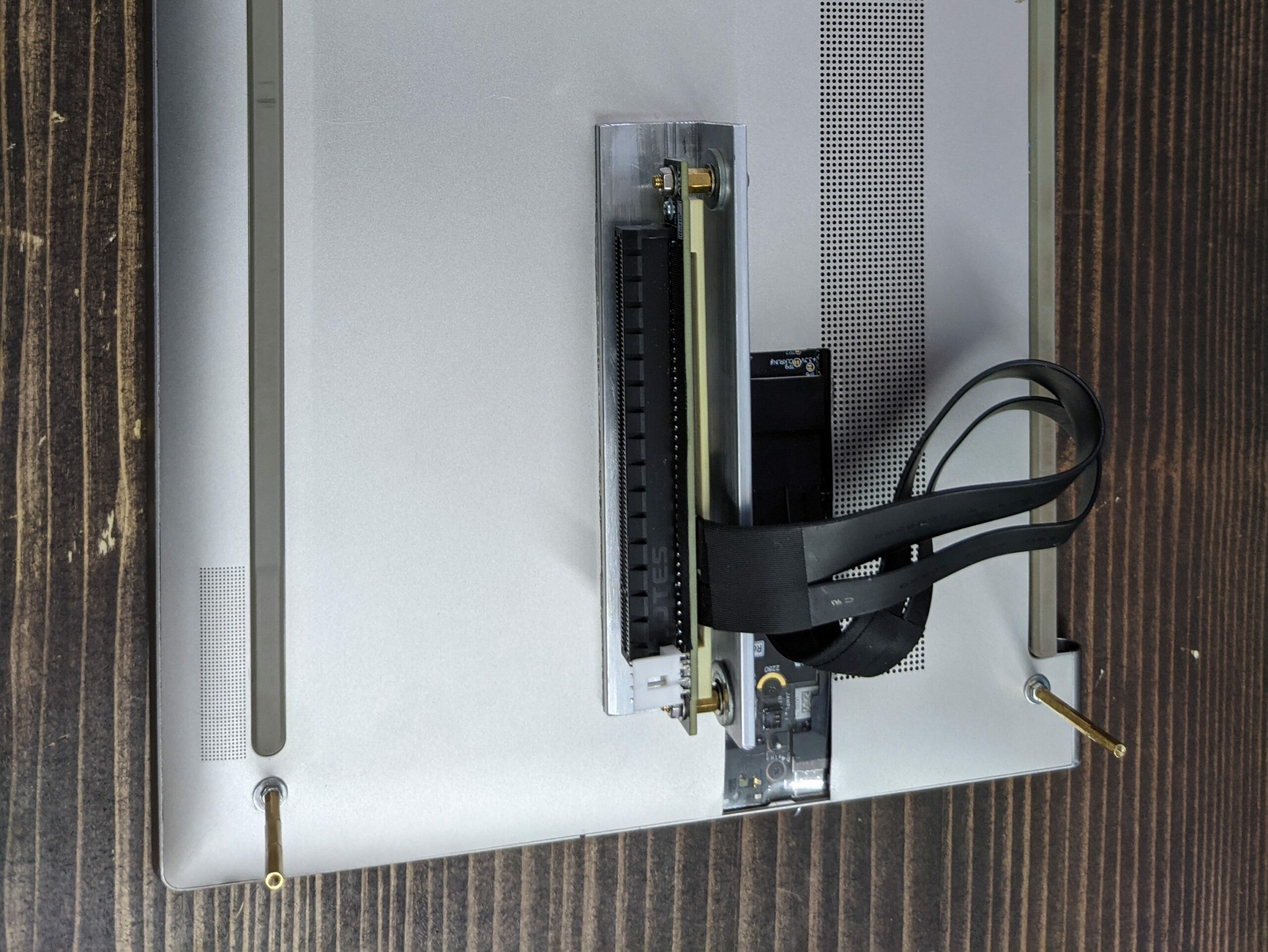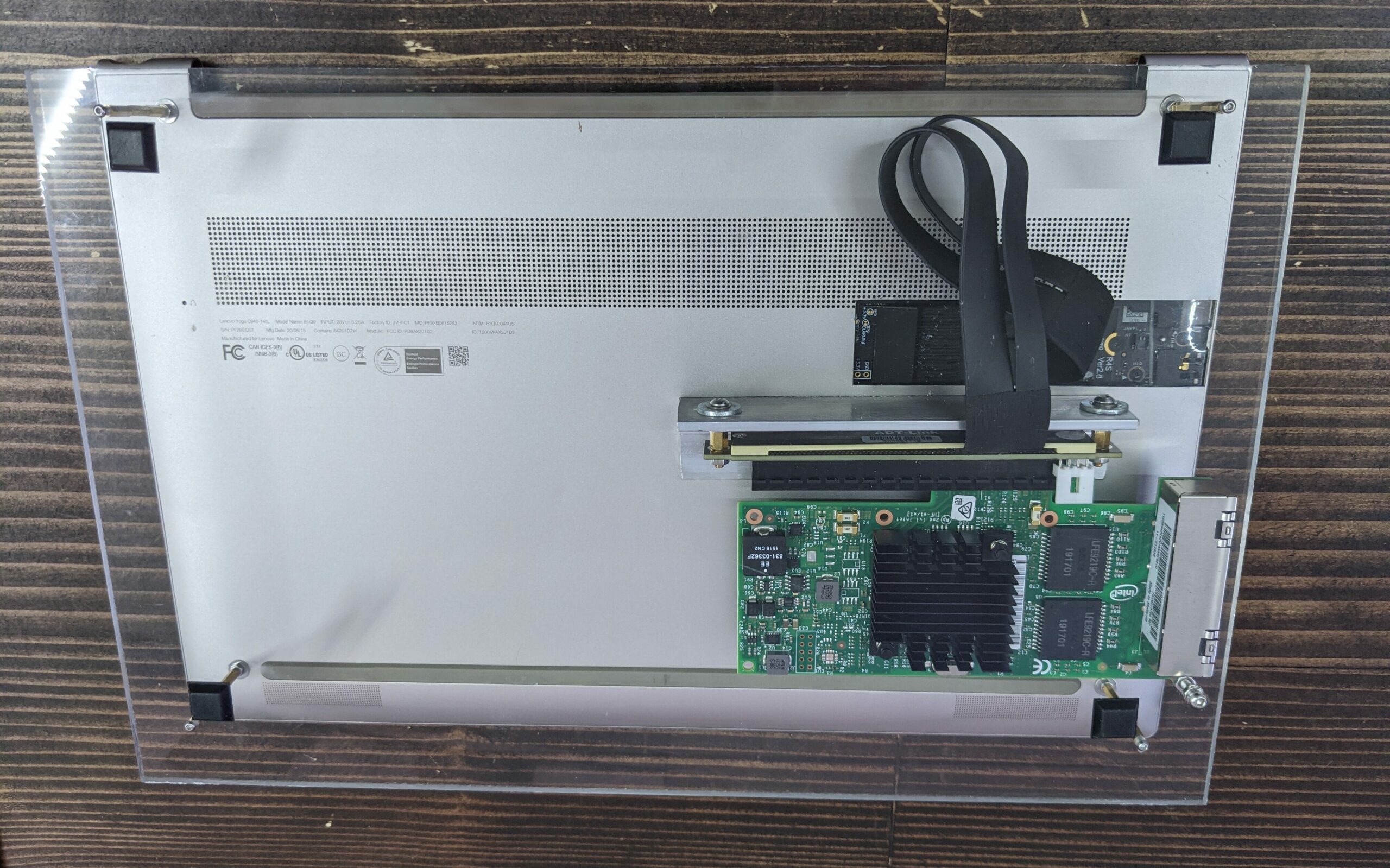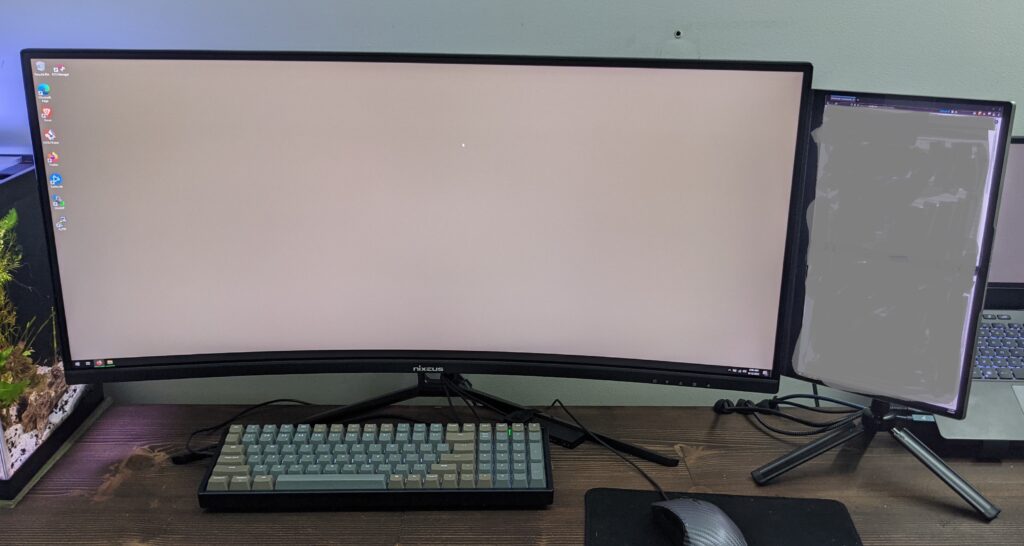
When I set out to convert a Lenovo C940 laptop into a router, I knew the screen wouldn’t be necessary so I removed it. However, I couldn’t let a 14 inch 4k display go to waste, so I converted it into a standalone monitor.
The conversion was relatively simple. After researching display protocols for internal laptop monitors, I found that the screen had an embedded DisplayPort (eDP) connector to communicate with the laptop’s motherboard. After searching for the part number of the LCD on aliexpress, I found an eDP controller board that claimed to be compatible with my lcd. After waiting a few months, the board arrived and thankfully worked great out of the box. It provides a USB-C input and an HDMI input along with a sound output and a touchscreen controller input which I am not using. The single USB-C connector provides both the power and video signal for the monitor.
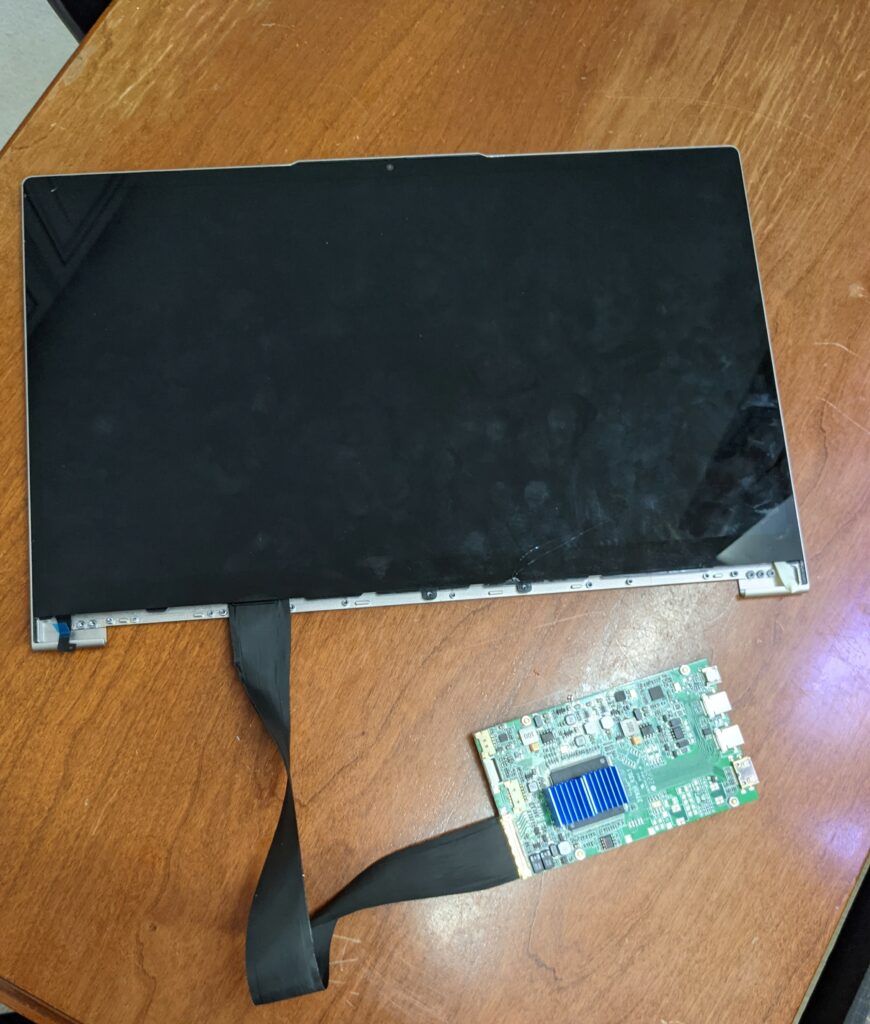
I cut an acrylic panel to the same size as the display, and bolted it to the back with some small screws. There is a channel cut on the inside of the acrylic panel through which the eDP cable is routed in order to protect it and hide some of the slack. The controller board is attached with some short brass standoffs which are epoxied into the acrylic panel. I cut another smaller square of acrylic and installed a 1/4 x 20 threaded insert which was then adhered to the main panel so I could mount the screen to a small tripod.
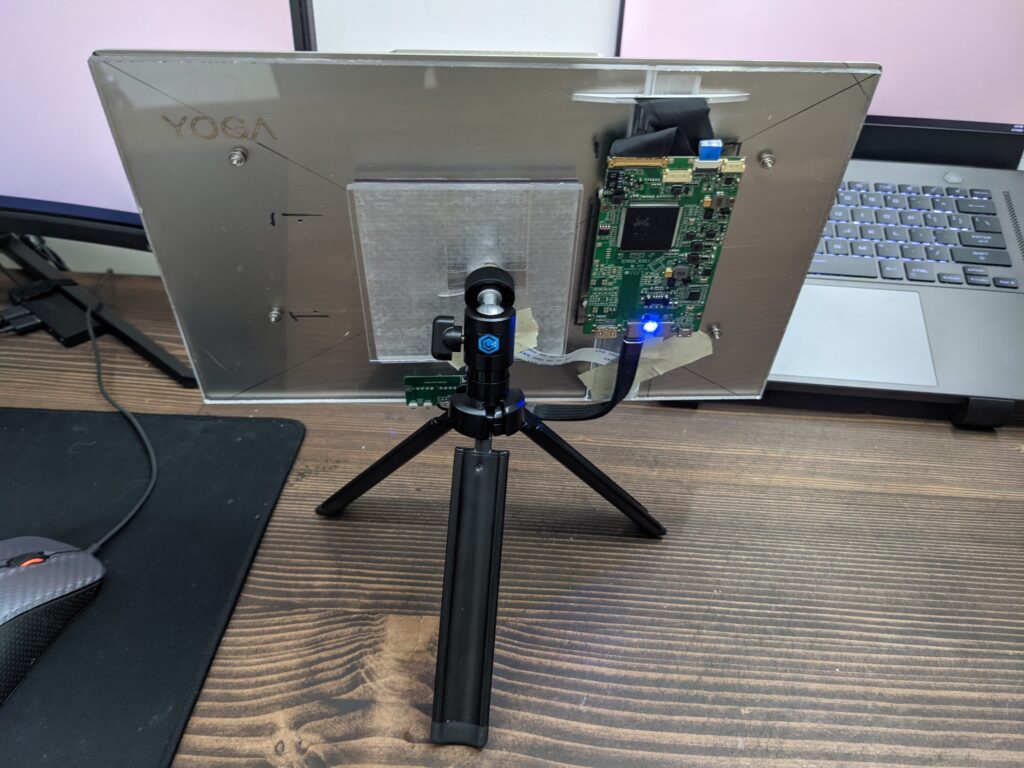
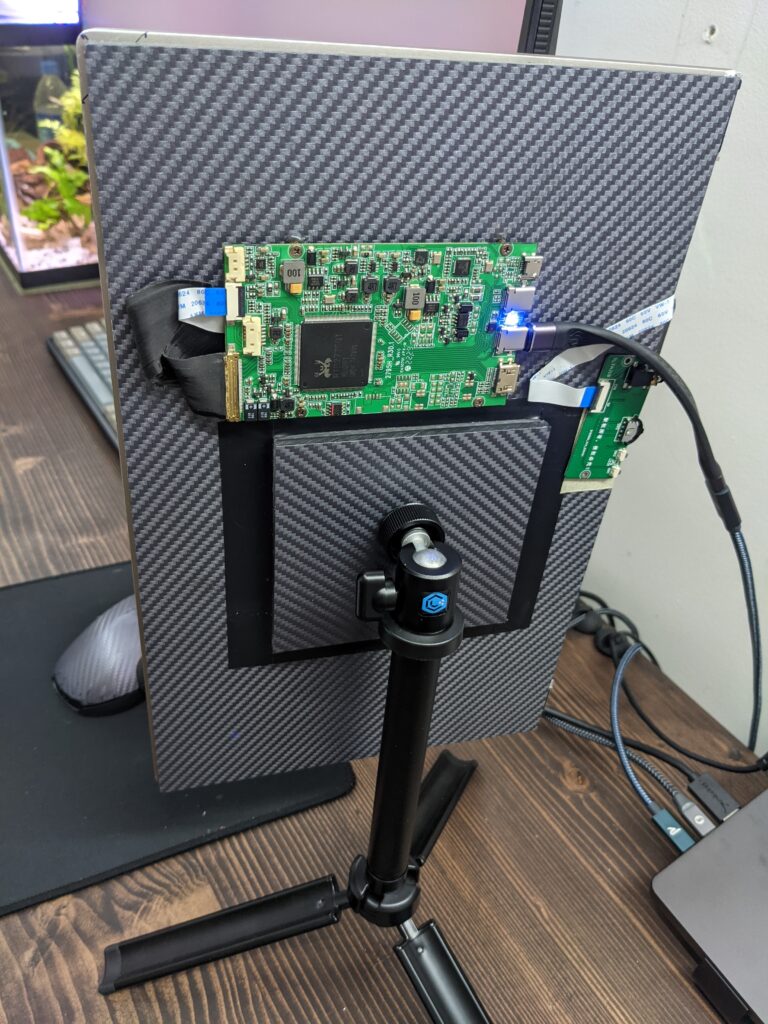
Finally, I had some carbon fiber textured vinyl wrap left over from another project which I used to hide some imperfections and help it look a little more “finished.”
This monitor has worked well for months now. The 4k resolution on a 14 inch panel lends itself nicely to 200% scaling at full resolution. Text appears very sharp on the monitor and it is very handy for having a reference page or video open while using the main monitor for productivity.

